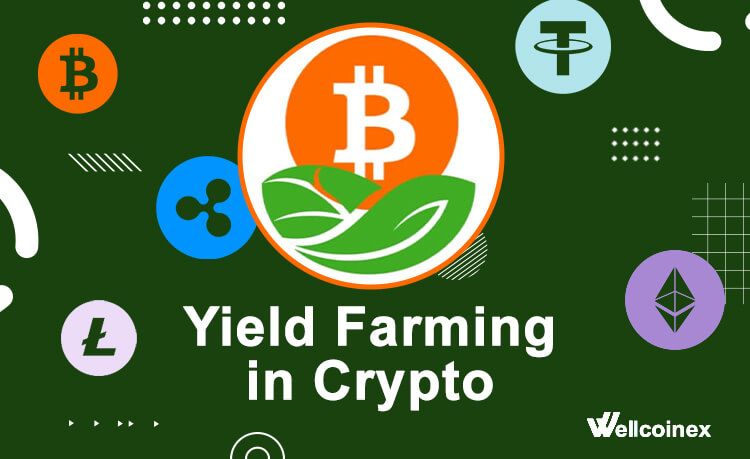Is yield farming still profitable
What is yield farming
Yield farming is a method of producing incentives by giving decentralized finance (DeFi) protocols access to liquidity. Users who engage in yield farming contribute their cryptocurrency to liquidity pools, which are smart contracts that carry out transactions automatically and give liquidity to other platform users. Users are rewarded with interest or extra tokens from the platform’s native token in return for generating liquidity.
Since yield farming enables users to earn substantial returns on their cryptocurrency holdings, it has grown in popularity in the DeFi sector. However, compared to traditional investments, it also carries a higher level of risk because the yield and token value can fluctuate greatly. Before engaging in yield farming, users should conduct thorough study and understand the risks involved.
The history of Yield Farming
The rise of automated market makers (AMMs) and the development of decentralized finance (DeFi) are key factors in the history of yield farming. With the introduction of the COMP token by Compound Finance, a lending and borrowing protocol built on the Ethereum blockchain, in the middle of 2020, the idea of yield farming first came into being.
The COMP token was created to encourage users to fund the network, hence boosting its liquidity and transaction volumes. The token was sent out to users who supported the protocol financially, and as more users engaged in yield farming, its value soon increased.
The growth of yield farming was also significantly influenced by automated market makers (AMMs). Many DeFi protocols use these smart contracts to add liquidity to their platforms, allowing users to trade cryptocurrencies without using conventional order books.
The price of a cryptocurrency is established by AMMs using a mathematical algorithm based on supply and demand. Users can do this whenever they want to buy or sell cryptocurrencies without depending on other buyers or sellers.
Users can receive a portion of the platform’s transaction fees as well as additional benefits in the form of tokens from the platform’s native token by lending liquidity to AMMs. As a result, cryptocurrency owners now frequently use yield farming to generate big returns on their DeFi investments.
How yield farming works
Here’s how it works:
- The first step is to choose a DeFi platform that rewards yield farming. These platforms frequently employ automated market maker (AMM) protocols, which let users trade cryptocurrencies devoid of the need for conventional order books.
- After deciding on a platform, you must supply liquidity by adding cryptocurrency to the platform’s liquidity pool. Sending cryptocurrency to a smart contract that automatically conducts trades on the site is the necessary step in this process.
- In return for supplying liquidity, you’ll get paid in the form of transaction fees, interest, or native tokens from the platform. Depending on the platform, the rewards are typically given out in the same cryptocurrency that you contributed, or in a separate coin.
- You must manage your position as a yield farmer by keeping an eye on the worth of the tokens you’ve deposited and the benefits you’re receiving. To maintain the ideal ratio of tokens in the liquidity pool, you might also need to rebalance your position by adding or subtracting liquidity.
- When you’re prepared to do so, you can withdraw your money by taking your liquidity out of the pool. Withdrawing your money could be subject to a waiting period or a cost, depending on the platform.
It’s important to note that yield farming involves higher levels of risk compared to traditional investments, as the value of the tokens and the yield can be highly volatile. It’s important for users to carefully research and understand the risks involved before participating in yield farming.

Is yield farming still profitable
The profitability of yield farming can vary depending on market conditions, the particular DeFi platform being used, and the specific cryptocurrency being used to provide liquidity.
In general, yield farming can still be profitable, but it also involves higher levels of risk compared to traditional investments. The value of the tokens used for liquidity and the yield offered by the platform can be highly volatile, and there is always a risk of losing the invested funds.
Furthermore, the competition among yield farmers has increased over time, leading to lower yields and rewards in some cases. This means that users may need to carefully research and select the most profitable platforms and strategies to achieve high returns on their investments.
Overall, yield farming can be a profitable investment strategy for those willing to take on the associated risks, but it’s important to carefully research and understand the risks involved before participating.
What is the difference between staking and yield farming
In the decentralized finance (DeFi) realm, yield farming and staking are both methods for earning rewards, although they each have unique qualities.
Staking is the practice of keeping cryptocurrency in a wallet or on a network to assist the security and administration of the network in exchange for rewards.
Staking often entails securing cryptocurrencies for a predetermined amount of time, with incentives typically being paid out in the same cryptocurrency that was staked. Proof-of-stake (PoS) blockchain networks frequently use staking to protect the network and encourage users to hold and spend their tokens.
On the other hand, yield farming entails giving liquidity to a DeFi platform in return for benefits. AMM systems, which allow users to trade cryptocurrencies without depending on conventional order books, are often fueled by user liquidity. Users receive benefits in the form of transaction fees, interest, or tokens from the platform’s native token in return for providing liquidity.
Although both staking and yield farming involve receiving rewards for holding cryptocurrency, staking is more concerned with network security and governance, whereas yield farming is more concerned with liquidity provision and encouraging users to use the DeFi platform.

